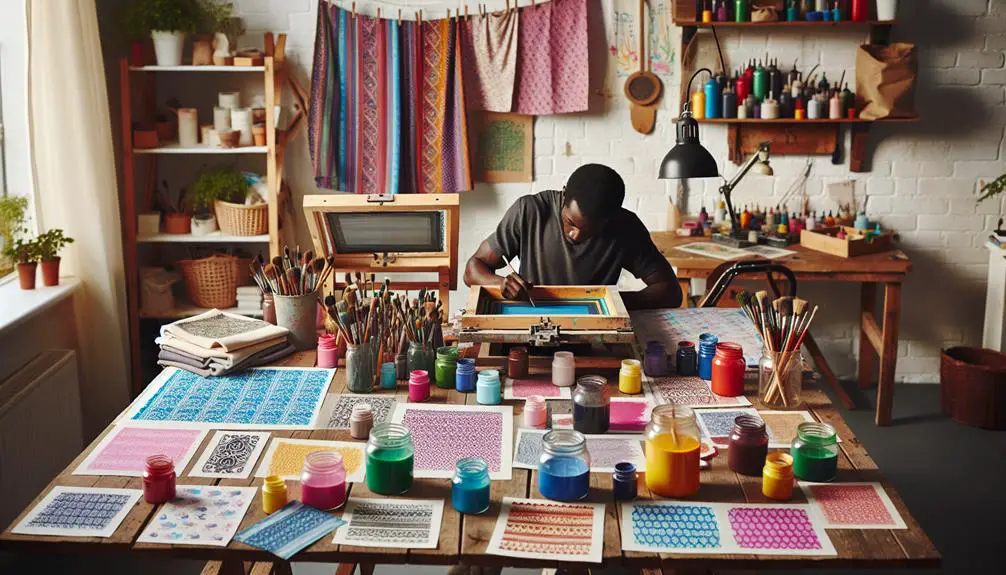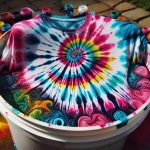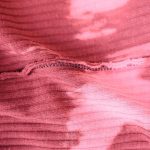Creating custom fabric prints at home begins with selecting the right fabric, taking into account your project's purpose and the fabric's characteristics. You'll want to match high-quality printing materials to the fabric type, whether it's pigment inks for natural fabrics or disperse dyes for synthetics. Designing your patterns is where your creativity shines, so consider color theory and personal style, experimenting with shapes and lines. Setting up a clean, well-lit workspace with an efficient workflow is important. The choice of printing technique—screen printing or block printing—impacts the final look. But how do you make sure those prints last?
Table of Contents
Key Takeaways
- Choose the right fabric and high-quality inks for vibrant and durable prints.
- Designate a clean, well-lit workspace to prepare and print efficiently.
- Use screen, block, digital, or heat transfer printing techniques based on your design complexity.
- Test your design on a small fabric swatch before the final print to ensure color and pattern accuracy.
- Follow proper ink setting methods like heat setting or steaming to ensure long-lasting prints.
Choosing Your Fabric
The first step in creating custom fabric prints at home is selecting the right fabric for your project. You need to understand the various fabric types available and their unique characteristics. Cotton is a versatile option, known for its ease of printing and vibrant color retention. Linen offers a more textured, rustic feel, making it perfect for home decor projects. Silk, although luxurious, may require more careful handling and specific printing techniques.
Choosing fabric types isn't just about texture and feel; it's also about color coordination. Think about the final design and how the fabric's base color will interact with your chosen inks or dyes. For instance, lighter fabrics like white or pastels make your prints pop, while darker fabrics may require special primers or techniques to achieve the same effect.
Consider the end use of your project as well. If you're making a garment, you'll want a fabric that's comfortable and durable. For decorative items, aesthetics might take precedence over functionality.
Selecting Printing Materials
When selecting printing materials for your custom fabric prints, focus on finding high-quality inks or dyes that match the fabric type you've chosen. This is essential for achieving the best print quality and ensuring the longevity of your design.
Begin by exploring various ink options. Pigment inks are excellent for natural fabrics like cotton and linen, providing vibrant colors and excellent wash-fastness. For synthetic fabrics such as polyester, disperse dyes are a superior choice, penetrating the fibers for a durable, vivid print.
Next, consider the print quality you desire. High-quality inks often come with a higher price tag, but they're worth the investment for professional-looking results. You want your designs to stand out, so skimping on ink quality isn't advisable. Check the colorfastness and durability of the ink or dye, particularly for items that will be washed frequently.
Lastly, weigh your cost considerations. While premium inks and dyes can be more expensive, they offer better results and longer-lasting prints. Balance your budget with your quality requirements.
Investing in the right materials will pay off with stunning, custom fabric prints that you'll be proud to show off.
Designing Your Patterns
When designing your patterns, start by choosing color schemes that resonate with your style.
Sketch your pattern ideas on paper to visualize them before transferring to fabric.
Choosing Color Schemes
Before delving into creating your custom fabric prints, it's essential to choose a color scheme that complements your design vision. Understanding color psychology can deeply influence how your fabric patterns are perceived. Colors evoke emotions and set the tone for your design, so selecting the right hues is vital.
When choosing your color scheme, aim for color harmony to make sure that your DIY printing project looks cohesive and visually appealing. Here are some tips to help you make an informed decision:
- Understand Color Theory: Familiarize yourself with the color wheel, complementary colors, and analogous colors. This will help you create balanced and harmonious designs.
- Consider Your Fabric's Purpose: Think about the end use of your fabric. Are you designing for a vibrant summer dress or a cozy winter blanket? Your color choices should reflect the fabric's intended use.
- Test Color Combinations: Don't be afraid to experiment. Create small test swatches to see how different colors interact with each other on fabric.
- Stay True to Your Style: While trends are important, your personal style should guide your choices. Authenticity will make your designs stand out.
Sketching Pattern Ideas
Now that you've chosen your color scheme, it's time to bring your design ideas to life by sketching pattern concepts. Start by gathering pattern inspiration from various sources like nature, architecture, or even your favorite artworks.
Keep in mind the type of fabric selection you're aiming for, as different fabrics can influence the final look of your design.
When selecting color palettes, consider how your chosen colors will interact with each other. Use complementary shades to create a balanced and visually appealing pattern.
Sketching techniques are vital to refining your ideas; begin with simple pencil sketches to outline your concepts. Don't be afraid to experiment with different shapes, lines, and symmetry patterns.
Refine your sketches by adding details and considering how the pattern will repeat across the fabric. This step is crucial in ensuring a seamless and cohesive design.
Digital tools can also help you perfect your sketches, allowing you to easily adjust elements and test different color combinations.
Preparing Your Workspace
A well-organized workspace is important for creating successful custom fabric prints at home. To achieve the best results, you'll need to focus on organizing supplies and setting up equipment efficiently. Start by designating a clean, spacious area where you can work without distractions. Clear away any unnecessary items to make sure you have ample room for your materials and tools.
Next, make sure you have all your supplies within reach. Here are some steps to help you prepare:
- Gather your materials: Arrange your fabric, inks, brushes, and stencils in an easily accessible manner. Use containers or shelves to keep everything tidy.
- Set up your equipment: Position your printing press, screens, or any other tools you'll be using in a way that optimizes your workflow. Make sure they're securely placed and ready to go.
- Protect your workspace: Lay down a protective covering, like a drop cloth or old newspaper, to prevent any accidental spills or stains.
- Ensure proper lighting: Good lighting is essential. Use adjustable lamps or natural light to illuminate your workspace, so you can see details clearly and work precisely.
Printing Techniques
Once your workspace is prepared, let's explore various printing techniques to bring your custom fabric designs to life. Screen printing offers precision and vibrant colors, making it ideal for intricate designs. You'll need a mesh screen, stencil, and squeegee to push ink through the screen onto your fabric. This technique is perfect for producing multiple copies of the same design.
Block printing is another versatile method. Carve your design into a block of linoleum or rubber, apply ink to the surface, and press it onto the fabric. This technique allows for a hands-on approach and is fantastic for creating unique, textured prints.
For a high-tech option, consider digital printing. Using a specialized fabric printer, you can transfer detailed, multi-colored images directly onto your material. This method is excellent for complex designs and short runs, providing precision without the need for stencils or blocks.
Heat transfer printing involves printing your design onto special transfer paper and then using heat to press the ink onto the fabric. It's a straightforward method that works well for both simple and intricate designs.
Mastering these techniques will empower you to create stunning, custom fabric prints with confidence and precision.
Setting the Ink
Securing the ink on your fabric guarantees that your custom prints are long-lasting and vibrant. The drying process is vital for guaranteeing longevity, so start by letting your printed fabric air dry completely. This initial step is important as it allows the ink to set naturally before you apply any further heat.
Once the fabric is dry, the next step is heat setting, which is necessary for avoiding fading. You can use an iron or a heat press for this part. Here's how:
- Iron Method: Place a piece of parchment paper over your design and iron it on medium heat for 3-5 minutes. Move the iron continuously to avoid scorching.
- Heat Press Method: Set your heat press to 320°F (160°C) and press for 15-20 seconds. Ensure even pressure across the fabric.
- Oven Method: Preheat your oven to 300°F (150°C). Place the fabric on a baking sheet and heat for 5-10 minutes.
- Steaming Method: For delicate fabrics, steam your design by holding a steam iron a few inches above the fabric for 10-15 minutes.
Frequently Asked Questions
How Do You Care for Custom-Printed Fabric to Ensure Longevity?
An ounce of prevention is worth a pound of cure. For fabric maintenance and durability, wash gently, avoid harsh detergents, and air dry. For stain prevention, treat spills immediately. Use proper storage techniques to prevent fading and damage.
Can Custom Fabric Prints Be Used for Both Clothing and Home Décor?
Absolutely, custom fabric prints can be used for both clothing and home décor. Master various fabric printing techniques and draw from diverse design inspirations to create versatile pieces that elevate your wardrobe and interior spaces.
What Types of Ink Are Best for Different Fabric Types?
Just as Da Vinci chose his canvas wisely, you should consider ink compatibility and fabric durability. For cotton, use pigment inks for color fastness. Synthetic fabrics benefit from dye sublimation, enhancing printing techniques and longevity.
Are There Eco-Friendly Options for Creating Custom Fabric Prints?
Yes, you've got eco-friendly options for creating custom fabric prints. Use sustainable options like natural dye alternatives and DIY fabric methods. Green printing techniques can help you achieve beautiful designs while minimizing environmental impact.
How Do You Fix Mistakes Made During the Printing Process?
When life gives you lemons, troubleshoot errors meticulously. Start by identifying the issue, then use fabric paint or markers for correcting misprints. If all else fails, embrace the imperfection and turn it into a unique design.
- Tetron Fabric for Marine Applications: Durability and Use Cases - June 18, 2025
- Tetron Fabric for Outdoor Furniture: Weather Resistance and Care - June 18, 2025
- Tetron Fabric for Wall Coverings: Style and Application Tips - June 18, 2025





